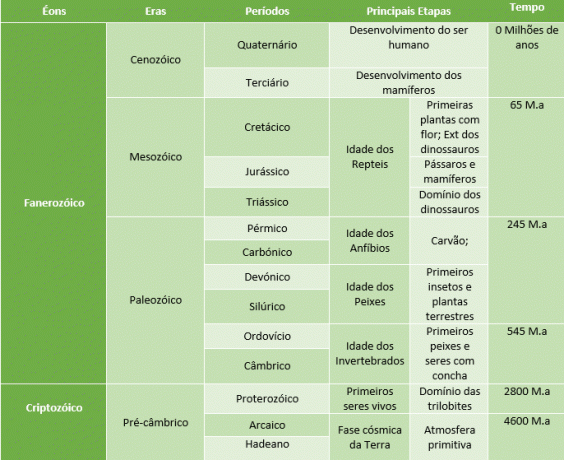The geological time scale is the correspondence and didactic organization of the evolution of the planet Earth and the forms of life that inhabit or have inhabited it. It is an instrument used by geologists and Earth scientists to analyze and chronologically categorize the natural evolution of the world we live in, in order to better understand the your past.
It is important to emphasize, in this sense, that, as the Earth is about 4.6 billion years old, there is a big difference between the geological time and the historical time. The first is data based on millions or hundreds of millions of years, with those events that last a few millennia being considered fast. On the other hand, the second covers a shorter scale, dating back decades or centuries, since History is considered from the invention and development of writing.
see more
Inequality: IBGE discloses the 10 worst states to…
Israel is the 4th strongest military power in the world; check the ranking
To get a better idea of the size of the
For this reason, all this great earth history it is divided into several geological eras, starting with the Precambrian, the longest era of all and also the one that is least known, which is almost 4 billion years long. Then come the Paleozoic, Mesozoic and Cenozoic eras. Each era is divided into several periods and some of these periods are subdivided into epochs. An ordered set of geological ages makes up an Eon. Note the following image.

